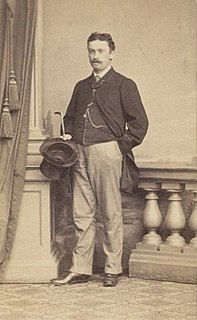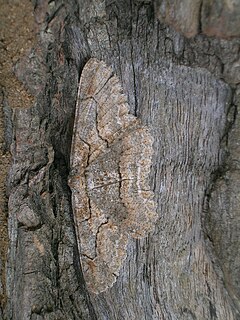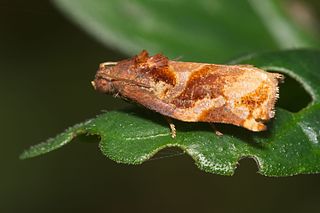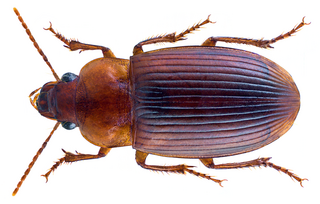Related Research Articles

John Nietner born Johannes Werner Theodor Nietner was a Prussian-born naturalist chiefly interested in botany and entomology. Born in Potsdam, he became a naturalized British citizen and owned a coffee plantation in Ceylon. During his stay in Ceylon from 1851 to 1874 he collected and described numerous insect species from the island. He also sent specimens for study by experts in Europe and many species such as Cethosia nietneri were named after him by others. Interested in insect pests, he wrote a booklet on the pests of coffee in 1861.

The Macariini are a tribe of geometer moths in the subfamily Ennominae. Though they share many traits with the Sterrhinae, this is probably plesiomorphic rather than indicative of a close relationship, and DNA sequence data points to the Boarmiini as particularly close relatives of the Macariini. All things considered, this tribe might still resemble the first Ennominae more than any other living lineage in the subfamily.

The Boarmiini are a large tribe of geometer moths in the Ennominae subfamily.

Boarmia driophila is a moth of the family Geometridae first described by G. M. Goldfinch in 1944. It is found in Australia.

Somena is a genus of tussock moths in the family Erebidae. The genus was erected by Francis Walker in 1856.

Hypomecis is a genus of moths in the family Geometridae first described by Jacob Hübner in 1821.

Homona is a genus of moths belonging to the subfamily Tortricinae of the family Tortricidae.

Anthiinae is a subfamily of beetles in the family Carabidae, containing the following genera:

Amblystomus is a genus of beetles in the family Carabidae, containing the following species:

Ooidius is a genus of beetles in the family Carabidae, containing the following species:

Homona coffearia, the tea tortrix or camellia tortrix, is a moth of the family Tortricidae. The species was first described by Nietner in 1861. It is widely distributed in the Oriental region.

Zeuzera is an Old World genus of moths belonging to the family Cossidae.

Polyphagozerra coffeae, the red coffee borer or coffee carpenter, is a moth of the family Cossidae. It was described by John Nietner in 1861 and is found in Asia. Records from the Moluccas and New Guinea refer to Polyphagozerra reticulata, which was previously considered to be a synonym of P. coffeae. It is a widespread pest that attacks many plants.

Abacetus is a genus of beetles in the family Carabidae, distributed across Africa, Asia and Australia, with a single European species. It contains the following species:
Somena exigua is a moth in the family Erebidae. It was described by John Nietner in 1861. It is found in Sri Lanka.
Polyphagozerra is a genus of moths in the family Cossidae.

Parasaissetia is a genus of scales and mealybugs in the family Coccidae. There are about five described species in Parasaissetia.
References
- ↑ Beccaloni, G.; Scoble, M.; Kitching, I.; Simonsen, T.; Robinson, G.; Pitkin, B.; Hine, A.; Lyal, C., eds. (2003). "Hypomecis ceylanicaria". The Global Lepidoptera Names Index . Natural History Museum . Retrieved 6 February 2019.
- ↑ "Species Details: Boarmia ceylonaria Nietner, 1861". Catalogue of Life. Retrieved 7 March 2018.
| This Boarmiini-related article is a stub. You can help Wikipedia by expanding it. |